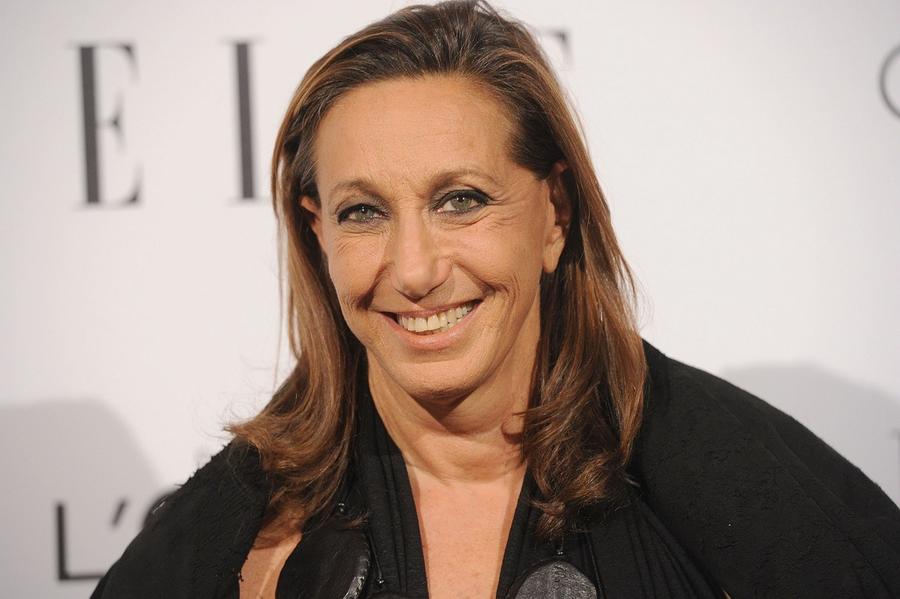What is Donna Karan's Net Worth?
Donna Karan is an American fashion designer who has a net worth of $600 million. Donna Karan is the creator of the Donna Karan New York and DKNY clothing and fashion labels. In the 1960s, Karan worked as an assistant designer under designer Anne Klein and was eventually promoted to associate designer in 1971. When Anne Klein died in 1974, a Japanese corporation purchased Klein's company, and Karan became head designer, along with friend and former classmate Louis Dell'Ollio. Karan started her own line of clothing, also known as DK and DKNY (Donna Karan New York), in 1985. DKNY began being publicly traded in 1996. The brand was acquired by LVMH in 2001. LVMH sold the brand for $650 million in 2016. Donna departed from the brand the year prior.
For many women, Donna Karan utterly changed the way they viewed fashion – and themselves. Her clothing creations had the distinct ability to look great on just about everyone, regardless of body type. More than her fashion prowess, however, it was her savvy entrepreneurial abilities that set her apart and made her an icon for many.
Early Life
Donna Karan was born on October 2, 1948, in New York City as Donna Ivy Faské. She was born to Helen Faské and father Gabriel Faské. The family lived in the Forest Hills neighborhood of the borough of Queens. Her mother worked as a model and worked in the showroom of designer Chester Weinberg, while her father was a tailor and haberdasher. When Donna was three years old, her father passed away.
After her father's death, Donna and her sister, Gail, were raised by their mother in Woodmere, New York. Donna enjoyed sports like volleyball and softball but was equally as interested in the arts, sometimes cutting class to work on art projects. She attended Hewlett High School, graduating in 1966, and then enrolled at Parsons School of Design.

Jason Merritt/Getty Images
Early Career
After finishing college, Karan began her career in fashion by working for the designer brand Anne Klein in the late 1960s. She was promoted to associate designer in 1971 and worked directly with Klein herself. In November of 1973, she was a participant in The Battle of Versailles Fashion Show. In 1974, when Klein died, the Takihyo Corporation of Japan became the new owner of the design house and named Karan head of the Anne Klein design team and remained in this role until 1984.
DKNY
In 1984, she decided to branch out on her own. With the support of her late husband, Stephan Weiss, and the parent company of Anne Klein, the Takihyo Corporation of Japan, Donna Karan set out to do something new with fashion. She wanted to create fashionable clothes that were also wearable. She wanted "to design modern clothes for modern people." She introduced her first women's collection, the Donna Karan Collection, in 1985 and it was only up from there. Her line was built on the idea that clothes could be mixed and matched but always attractive. Her first line, the "Essentials," was a huge success. She deliberately designed the type of clothes that she herself would wear, and her personal fashion choices were hits with everyone. Her clothing line was based on a flattering bodysuit which could be mixed and matched with shirts, sweaters, coats, accessories, and her signature dark tights. The line was a godsend for working women of the 80s, who often found themselves stuck in woefully unflattering "boxy" styles that were basically repurposed versions of men's business suits. Karan's line utterly remade women's workday fashion and set the stage for the sleek, tailored, and feminine look that we associate with all high-powered women today. Her line was so successful that just two years after it was launched, legendary fashion critic Carrie Donovan wrote, "Sometimes one wonders how executive women dressed before Donna Karan."
The immediate success, which included the distinction of being the most popular collection at Bergdorf and Saks in 1985, earned her the nickname, the "Queen of Seventh Avenue." The upper echelon of the fashion world was no longer a boy's club. Donna Karan was the new star. Expansion quickly followed. In 1988, she launched a line of clothes for younger women inspired by her daughter, Gabby. Less expensive and slightly funkier, the DKNY line, like her Donna Karan New York line, was an instant hit. 1990 brought about the DKNY Jeans line, in response to demands for a denim collection that was as successful as her line of slacks and dress pants. 1991 brought about the "Signature" line for men, and in 1992, she launched a DKNY line for men, as well. The company grew in leaps and bounds throughout the 90s and early 2000s, adding multiple lines, including DKNY Active, DKNY Underwear, DKNY Jeans Juniors, DKNY Kids, the Donna Karan Home Collection, DKNY Home, and a line of hugely popular fragrances. She received award after award for her design work, including being named Womenswear Designer of the Year in 1990 and 1996, and Menswear Designer of the Year in 1992, by the Council of Fashion Designers of America. In 2004, she received their Lifetime Achievement Award, as well.

Mike Coppola/Getty Images
In 1997, she stepped down as CEO of the company, but remained on board as Head Designer and chairwoman. In 2001, the company was purchased by LVMH, Louis Vuitton Moet Hennessy.
LVMH paid $243 million for all outstanding shares in DKI, plus $400 million for Gabrielle Studio Inc., the licensor of the Donna Karan trademark. (LVMH also owns Dior, Fendi, and Givenchy.) It is estimated that Karan and Weiss made $450 million from the sale. The sale of DKI (and its more affordable brand DKNY) made Karan a very, very, wealthy woman.
While the new parent company allowed the Donna Karan line to expand and to reintroduce portions of the collection that had previously been retired, there was a feeling that the merger wasn't quite as happy as it could have been. LVMH chose to focus most of the company's energy on DKNY, which left the original Donna Karan line with far less support.
When she announced her retirement in July 2105, no one in the fashion world was really surprised. Over recent years, she had shifted more and more of her focus to her philanthropic work, including the Urban Zen Initiative, a foundation she co-founded in 2007 to support Haitian artisan commerce, among other causes, including health care, preservation, and education.

Mark Von Holden/Getty Images
Personal Life
In 1976, Karan married Mark Karan. The two had a daughter together named Gabby before divorcing in 1978. In 1983, she married artist Stephan Weiss. He would later become the co-CEO of the Donna Karan company. They share one son named Corey. In 2001, Weiss died of lung cancer. Karan maintains several residences. She usually lives in Northwest Harbor of East Hampton in New York but also has homes in New York City and the islands of Turks & Caicos.
Turks & Caicos Estate
In 2002, Donna bought a 10 acre estate on Parrot Cay in Turks and Caicos. She then built a private resort that she named "The Sanctuary". She built and designed the entire property pretty much from the ground up. In 2014 she put seven of her 10 acres up for sale for a cool $39 million. This house is absolutely stunning. It's pretty much my ultimate dream, check it out:
Parrot Cay is one of the most exclusive and secluded resort islands in the entire Caribbean. It's where Ben Affleck married Jennifer Garner in 2005 and where Bruce Willis married Emma Heming in 2009. Celebrities like Justin Timberlake, Paul McCartney, Julia Roberts, Barbra Streisand and Penelope Cruz, are frequent visitors to this magnificent slice of paradise. Keith Richards owns a home here, as does Bruce Willis. Here's a video tour of Donna Karen's estate:
/2010/05/Donna-Karan.jpg)
/2010/11/marc-jacobs.jpg)
/2020/01/Calvin-Klein.jpg)
/2010/12/John-Varvatos.jpg)
/2020/06/vo.jpg)
/2010/05/Tory-Burch.jpg)
/2021/08/dov-charney.jpg)
/2021/06/bobby-bonilla.jpg)
/2015/08/Petra-Kvitova.jpg)
/2023/05/Jimmy-Swaggart.jpg)
/2021/09/Jessica-Hahn.jpg)
/2010/01/GettyImages-149907344.jpg)
/2021/07/jim-bakker.jpg)
/2020/08/cusack.jpg)
/2015/12/GettyImages-56543209.jpg)
/2021/11/rich-vos.jpg)
/2020/01/Tammy-Faye-Messner.jpg)
/2010/05/Donna-Karan.jpg)
/2010/11/marc-jacobs.jpg)
/2013/05/GettyImages-463853378.jpg)
/2014/09/ken.jpg)
/2016/11/GettyImages-463522112.jpg)
/2020/06/vo.jpg)
/2010/12/GettyImages-463579460.jpg)
/2013/11/GettyImages-475555226.jpg)